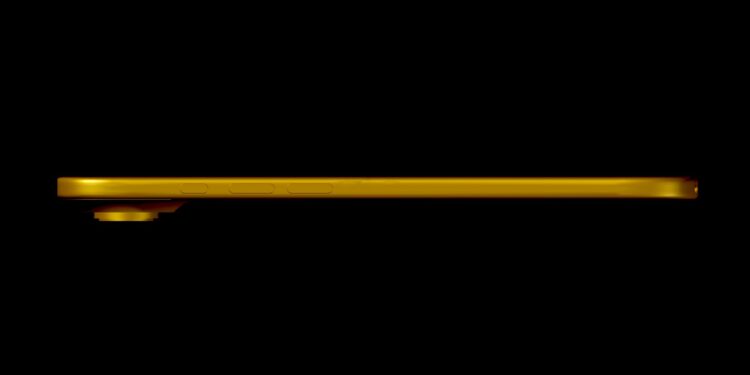Apple could make a change to the iPhone Air in 2027. The focus will be not only on the thinner design, but also on technical innovations in the display. More specifically, Apple plans to use an LTPO3 OLED panel, which is said to be significantly more energy-efficient than current displays. A new report from the Korean website The Elec provides initial evidence of this.
Apple is continuously developing its display technologies. In recent years, the so-called LTPO process was introduced in the Apple Watch and iPhone Pro to reduce power consumption. The next stage is called LTPO3 and could be used for the first time in the iPhone Air in 2027. This decision is strategic—because, especially with particularly thin devices like the Air model, every millimeter and every watt saved is crucial.
LTPO3: The next display generation
Smartphone displays consist of millions of tiny transistors that control each pixel individually. Apple has previously used a combination of two transistor types: those that consume little energy but are slower, and those that are fast but power-hungry. This hybrid is used in the LTPO2 displays of the iPhone 17 series. With LTPO3, Apple aims to further reduce power consumption. To achieve this, both switching and driver transistors will be made of a new material: oxide semiconductors. These are particularly efficient but react more slowly. This means Apple must find a way to balance performance with energy savings.
Why LTPO3 is important
The biggest advantage of the new technology is evident at low refresh rates – for example, with the Always-On Display, when only the time or notifications are shown. Here, the refresh rate can be reduced to 1 Hz, which saves a lot of power. Battery life therefore benefits, especially in standby mode or with minimal use. Since the iPhone Air is expected to be very slim, there is hardly any room for a large battery. Every technical saving in power consumption counts twice. That's why Apple is not primarily planning the new displays for Pro models, but for thin devices like the iPhone Air, where space is a concern.
Technology tested – in the Apple Watch
Apple has already incorporated LTPO3 technology into the Apple Watch Series 10. The experience gained there was likely crucial for expanding the technology to larger displays. Not only is the surface area of an iPhone larger, but the demands on brightness, response time, and image quality are also significantly higher. The fact that Apple is nevertheless choosing this approach demonstrates the confidence it has in the new architecture.
Production by Samsung and LG
According to The Elec, the new displays will be manufactured by Samsung and LG. Both companies would have to set up new production lines for this. This will be a greater challenge for LG, as the company produces significantly fewer OLED displays than Samsung. Nevertheless, Apple is expected to decide by the third quarter of 2025 at the latest whether at least one 2027 iPhone model will be equipped with the new technology. This would give suppliers approximately two years to prepare for mass production.
Why the iPhone Air comes first
Apple doesn't plan to switch all models to LTPO3 immediately. The Pro models, in particular, with larger batteries, will benefit less from the new efficiency. The situation is different with the iPhone Air: A thin design means little space for a battery—here, every technical advantage is crucial. Therefore, the new display technology will likely appear first in the Air model.
iPhone Air as a pioneer for new display technology
The 2027 iPhone Air could be the first iPhone with an LTPO3 OLED display. The new technology saves power, extends battery life, and enables a particularly slim design. Apple is working with Samsung and LG on a new production line for this and is expected to make a final decision on its use in 2025. If you're looking for a lightweight, efficient iPhone, the iPhone Air with an LTPO3 display could be particularly interesting for you. (Image: MajinBuOfficial / X)
- iPhone 17 to feature 50-watt wireless charging
- iPhone 17: ProMotion not coming to all models after all?





